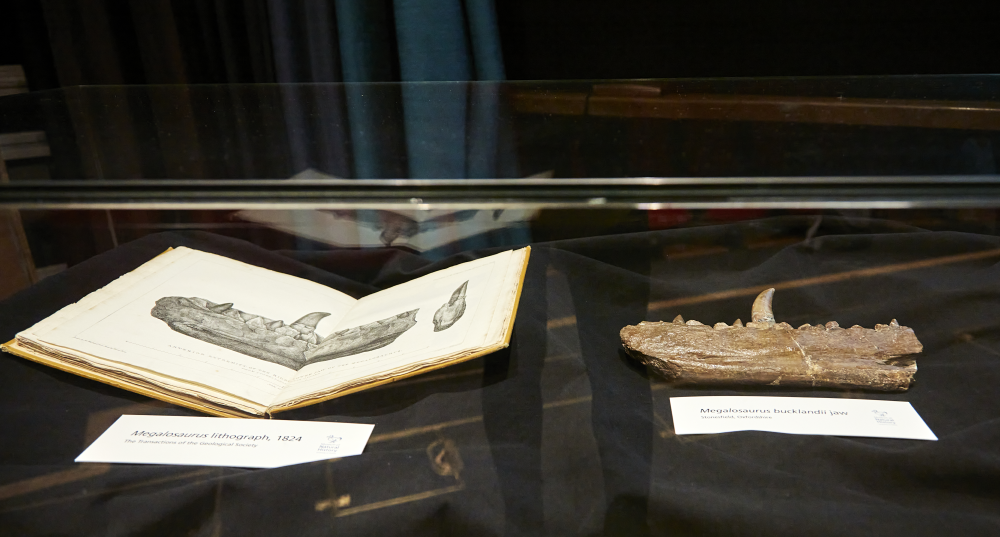Two hundred years ago, a dinosaur was given a scientific name for the first time. It was named Megalosaurus, and it’s a strange moment in history to contemplate with the benefit of hindsight because, at the time, nobody knew what a dinosaur was. The word “dinosaur” wasn’t used until around 20 years later, so what on Earth did the discoverers of Megalosaurus think they were looking at?
On the February 20, 1824, cleric, geologist, and fellow at the University of Oxford William Buckland (who allegedly ate the heart of a king) presented Megalosaurus at meeting of the the Geological Society. Its name is derived from “great lizard,” which is near enough what Buckland thought he was dealing with.
“[There were] a number of years of people finding odd bones in the ground and wondering about them, but eventually they put two and two together and realised that these weren’t just any old bones, but they were the bones of a giant reptile,” Professor Paul Barrett of London’s Natural History Museum, who has published several papers on Megalosaurus, told IFLScience. “And that’s where the name Megalosaurus comes from, it means ‘great lizard,’ and so what they thought it was, was just a souped-up regular type of lizard, they thought it was essentially a huge iguana or a huge Komodo dragon-type animal.”
We spoke to Barrett in the bowels of the Natural History Museum, where authentic and cast Megalosaurus fossils can be found, to find out more about its discovery, what we’ve learned about dinosaurs since, and how it almost ended up being named after testicles…
How did we get from the discovery of Megalosaurus to the official recognition of dinosaurs 20 years later?
Prof Paul Barrett: Megalosaurus appears in 1824, to much acclaim that people have never really seen anything like this, and then more and more bones of these things start to come out from Oxfordshire, Sussex, and Kent. They start to be found in other parts of the UK, so museums start to build up collections of these.
And then a couple of years later, after all of these remains have built up and various people have studied them, suddenly, Sir Richard Owen – who was the leading anatomist at the time – realised that these animals had something in common. They weren’t just big lizards or big crocodiles, it was something distinct, and that’s what led him to come up with the name dinosaur in 1842. And it was his lobbying that actually got the Natural History Museum built in the first place.
How did a Megalosaurus fossil almost end up named after testicles?
PB: A few hundred years before the material Megalosaurus was found, a few odd bones were still turning up under the plough in places like Oxfordshire, and one of those bones was the end of a thigh bone, and this thigh bone has a very suggestive shape. It’s just the end of a thigh bone.
Initially, they thought it was part of an elephant and maybe the Romans had brought it over. Then, they thought maybe it was part of a giant man, and that’s when it starts to take a slightly kind of salacious turn.
[It was thought that] if it was a giant man, it was a…. very well-endowed giant man, let’s say, and so eventually this bit of bone became named Scrotum humanum, but it turns out that that thigh bone is probably a bit of a Megalosaurus thigh bone.

Dentary bone of Megalosaurus bucklandii, housed at Oxford University Museum of Natural History.
Image credit: Trustees of the Natural History Museum
How many species of Megalosaurus were there?
PB: There’s a single species at the moment, which is called Megalosaurus bucklandii, and that species name commemorates William Buckland who described Megalosaurus in the first place. But over the years, a number of other big meat-eating dinosaurs are also thought to be called Megalosaurus.
This goes back to old ideas about how we would classify animals and what we call a “wastebasket taxon”. Megalosaurus basically became a name that people would throw any big, large, meat-eating dinosaur into without really thinking about whether it was related to Megalosaurus or not. Over the years, there has been a very careful programme to actually go through all of these species of Megalosaurus and work out, are they really Megalosaurus? Or are they actually something different? And [what’s been found] is that the only real species of Megalosaurus is Megalosaurus bucklandii.
What do we know about Megalosaurus bucklandii?
PB: All of our finds are mainly of isolated bones, and that’s because of the way that they were collected, but when we take all of those bones together, we can actually piece together quite a lot of the animal. When we do that, what we find is that Megalosaurus was an animal that was up to about nine metres [30 feet] long, so pretty hefty. [It was a] large predator, [it] would walk on its hind legs only, like all the other meat-eating dinosaurs, and it came equipped with a large number of big, sharp, pointed teeth that it would have used for ripping through prey.
Does Megalosaurus hold a special place in your heart?
PB: It’s going to hold a special place for every dinosaur palaeontologist. It’s literally the first dinosaur to receive a scientific name. So, if you’d like, it’s the core of what everyone else does. It’s like the founding point of where everything else we do comes from.
Catch IFLScience’s full interview on YouTube, and Happy 200 Years Of Megalosaurus!
Source Link: 200 Years Ago, A Dinosaur Was Named For The First Time